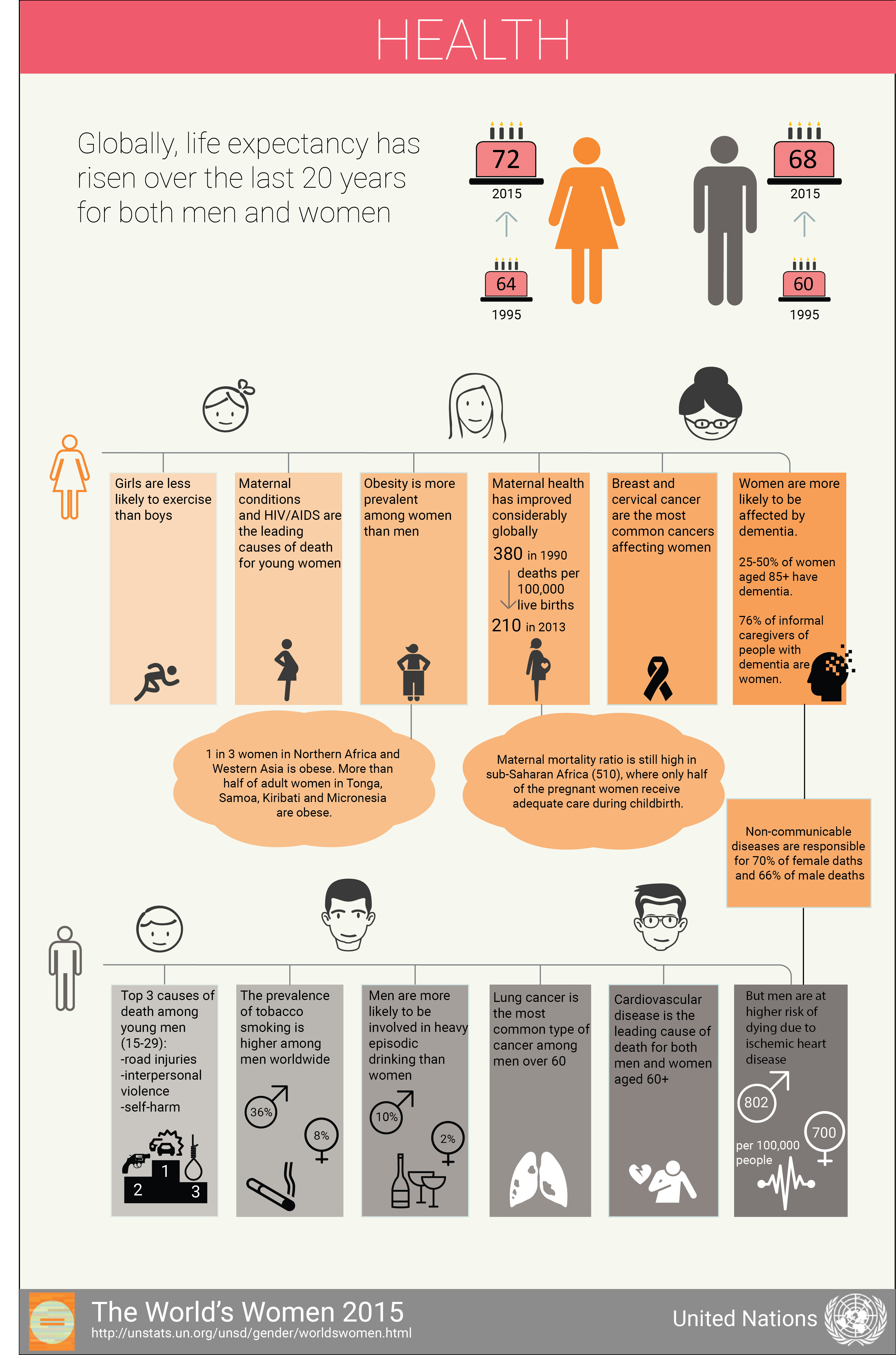Medical and technological improvements over several decades have extended the lives of both women and men, who are expected at present to live an average of 72 and 68 years, respectively. An analysis of mortality data across age groups and regions shows that women and men tend to die of different causes. In all regions, biological factors, along with gender inequality and gender norms, influence sex differences in health trajectories throughout the life cycle.
Adolescence and young adulthood should be a time of general good health with low mortality rates. Yet in developing regions, complications linked to pregnancy and childbirth, as well as sexually transmitted infections, particularly HIV, continue to take a heavy toll on the lives of adolescent girls and young women. This is due not only to underdeveloped health systems that are unable to address women’s needs, but also to gender issues. Poor access to information and education, early marriage, and lack of decision-making power among girls who are married or in relationship increase their exposure to sexually transmitted infections, unwanted pregnancies and the risk of unsafe abortion. Traditional gender expectations also exert a harmful effect on men. Adolescent boys and young men often take up habits and risky behaviours that are associated with images of masculinity. During adolescence and young adulthood, road injuries, interpersonal violence and self-harm are the leading causes of death among young men in both developed and developing regions. Injuries are also a leading cause of death among young women in developed regions, although the corresponding mortality rates are much lower than those of young men.
For women of reproductive age, the biological functions of pregnancy and childbirth create additional health needs. Overall, reproductive and maternal health has improved considerably over the past two decades. A growing proportion of women are using contraceptives and the demand for family planning is increasingly being satisfied. Worldwide, the number of maternal deaths declined by 45 per cent between 1990 and 2013. Still, in sub-Saharan Africa, only half of pregnant women receive adequate care during childbirth. In 2014, 83 per cent of pregnant women in developing regions had at least one antenatal care visit, an improvement of 19 percentage points since 1990. However, only 52 per cent of pregnant women had the recommended minimum of four antenatal care visits.
At older ages, non-communicable diseases such as cardiovascular disease, cancer, chronic obstructive pulmonary disease and diabetes are the more common causes of death. Over the entire life course, risk factors contributing to these diseases have a clear gender component. For instance, men smoke tobacco and drink alcohol to a much greater extent than women: 36 per cent of men aged 15 and over smoke and 48 per cent drink, compared to 8 and 29 per cent of women, respectively. However, large numbers of women have adopted these unhealthy habits, particularly in developed regions. Moreover, while the prevalence of obesity has increased among both sexes, women appear to be slightly more affected (14 per cent of women aged 20 and over are obese compared to 10 per cent of men). Mental disorders, in particular dementia, are among the major causes of disability in later life. In 2013, an estimated 44 million people globally were living with dementia, a number that is expected to double every 20 years. Women are more affected than men due to women’s greater longevity and the typically late onset of dementia. Women also represent the majority of informal caregivers of people with dementia—mostly in their role as partners, daughters and daughters-in-law.
